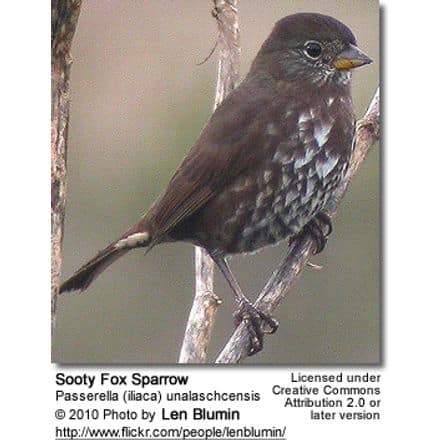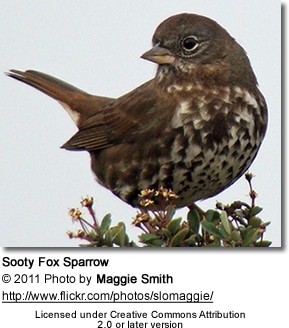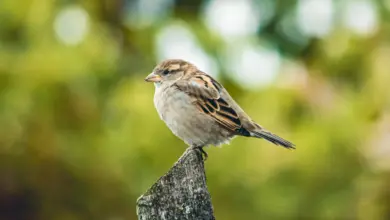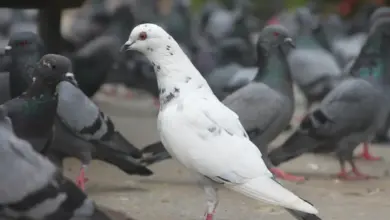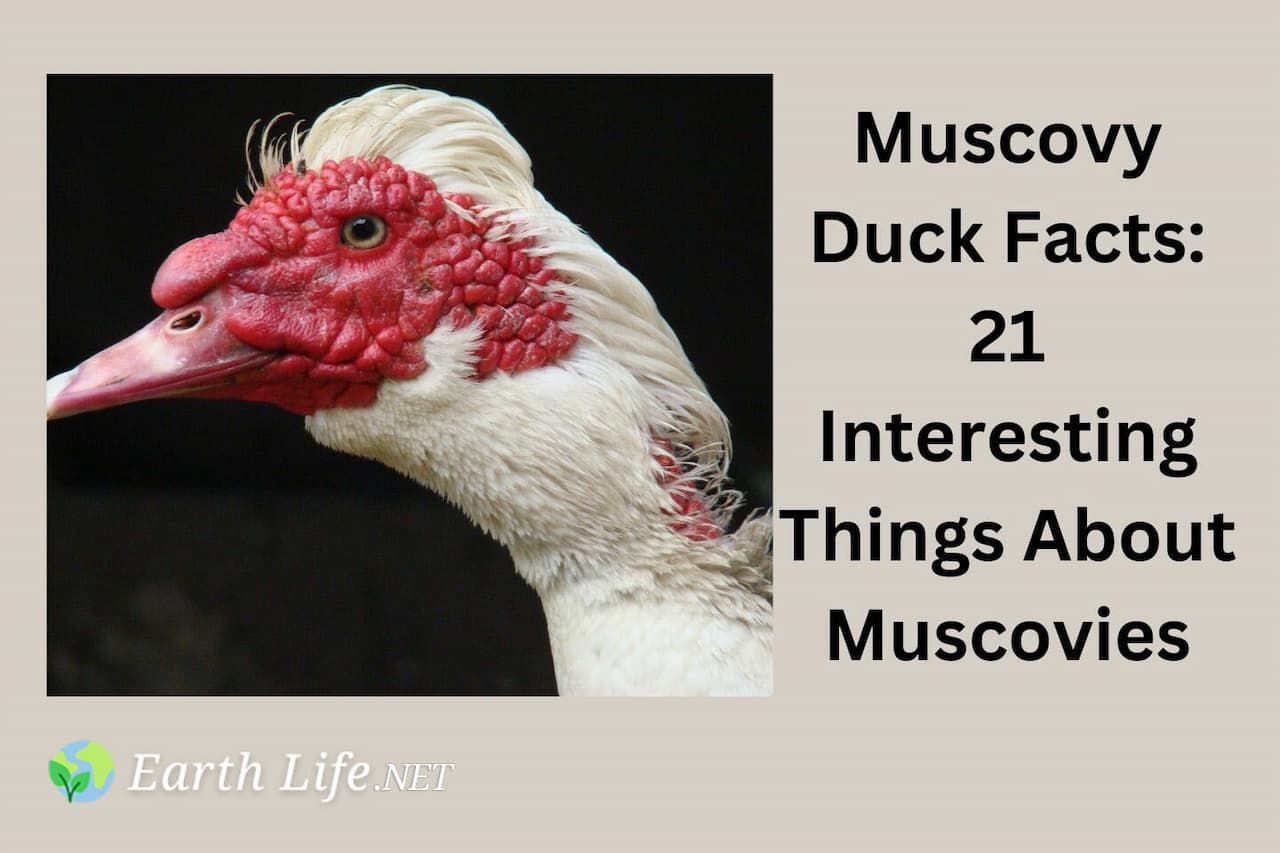Sooty Fox Sparrows
Sooty Fox Sparrows (Passerella (iliaca) unalaschcensis) contains the darkest-colored taxa in the genus Passerella. It is currently classified as a “subspecies group” within the Fox Sparrow pending wider-spread acceptance of species status. It has long been suspected to be a separate evolutionary lineage due to morphological distinctness (Swarth 1920), and this is confirmed by analysis of mtDNA sequence and haplotype data (Zink 1994, Zink and Kessen 1999, Zink and Weckstein 2003). This group appears to be most closely related to the Thick-billed and/or Slate-colored Fox Sparrows (Zink 1996, Zink and Weckstein 2003).
Description
The Sooty Fox Sparrows complex, unalaschcensis, varies clinally in intensity of color.
The upperparts and head are a variable shade of brown with streaks on the underparts of the same color.
Sooties can be told from all other Passerella by a complete lack of gray and rufous in the plumage.
The northernmost birds are a sandy brown while southernmost birds are a dark coffee-like color.

Six subspecies are usually recognized in the Sooty Fox Sparrow complex, ranging from unalaschensis in the Aleutians to fuliginosa in extreme northwestern Washington:
- unalaschcensis (Gmelin, 1789):
- Breeds from Unalaska Island (Aleutian Islands) to the Shumagin and Semidi Islands and adjacent Alaska Peninsula. Winter ranges from S British Columbia to southernmost California, rarely even further south.(Weckstein et al. 2002)
- There are two distinct groups known from the winter range: brownish ash-grey birds with a longer and more pointed bills, and darker lead-grey birds with thicker, blunter bills; the taxonomic significance of this is unknown (Weckstein et al. 2002). Seems to intergrade with sinuosa and insularis where their ranges meet. (Swarth 1920)
- townsendi (Audubon, 1838):
- Breeds along the Pacific coast from Glacier Bay to Queen Charlotte Islands. Winter range south of the breeding range, to C California.(Weckstein et al. 2002)
- Much darker and more rufous than unalaschcensis, with conspicuously larger and more plentiful breast spots similar to fuliginosa (Swarth 1920).
fuliginosaRidgway, 1899:
- Breeds on the mainland S from Stikine River to NW Washington. Winter ranges from SW British Columbia south to coastal C California.(Weckstein et al. 2002)
- Darker and sootier than townsendi, with the largest and most plentiful breast spots (Weckstein et al. 2002).
- annectens Ridgway, 1900:
- Breeds along the Pacific coast from N Yakutat Bay to Cross Sound. Winter range coastal C California.(Weckstein et al. 2002)
- Intermediate between sinuosa and townsendi (Swarth 1920). Morphology and range suggest its validity should be checked.
- insularis Ridgway, 1900:
- Breeding is limited to Kodiak Island. In winter, found along the Pacific coast southwards to southernmost California.(Weckstein et al. 2002)
- Brighter and more uniformly ruddy above, with strong and rich brown breast spots; under tail-coverts tinged buff (Weckstein et al. 2002).
- sinuosa Grinnell, 1910:
- Breeds around Prince William Sound and Kenai Peninsula and on Middleton Island. In winter, south along the Pacific slope of S California.(Weckstein et al. 2002)
- Intermediate between unalaschcensis and insularis, but bill markedly more slender than in either (Weckstein et al. 2002).
- chilcatensis Webster, 1983:
- The “non-typical fuliginosa” of Swarth (1920), breeding between the Chilkat River area to Tewart and its surroundings (British Columbia), and wintering along the coast, mainly between Oregon and the San Francisco Bay region (Weckstein et al. 2002).
- Much like fuliginosa, but duller and shorter-tailed. Not usually accepted as distinct by recent reviewers (e.g. Zink 1994, Rising and Beadle 1996, Zink and Kessen 1999), although the presence of similarly distinct birds in unalaschcensis suggests the matter warrants more research.
Breeding / Nesting
Sooties prefer to breed in willows and alders at the edge of wet habitats.
Call / Song
Beadle and Rising (2002) describes their call note as a sharp zitt or thik, while Sibley (2000) says it is like that of Red Fox Sparrow.
Copyright: Wikipedia. This article is licensed under the GNU Free Documentation License. It uses material from Wikipedia.org … Additional information and photos added by Avianweb.
If you would like to add to or correct any of the above information, or would like to share with the AvianWeb visitors your own experiences, please e-mail the AvianWeb Webmaster.
Photo contributions and articles are welcome!

